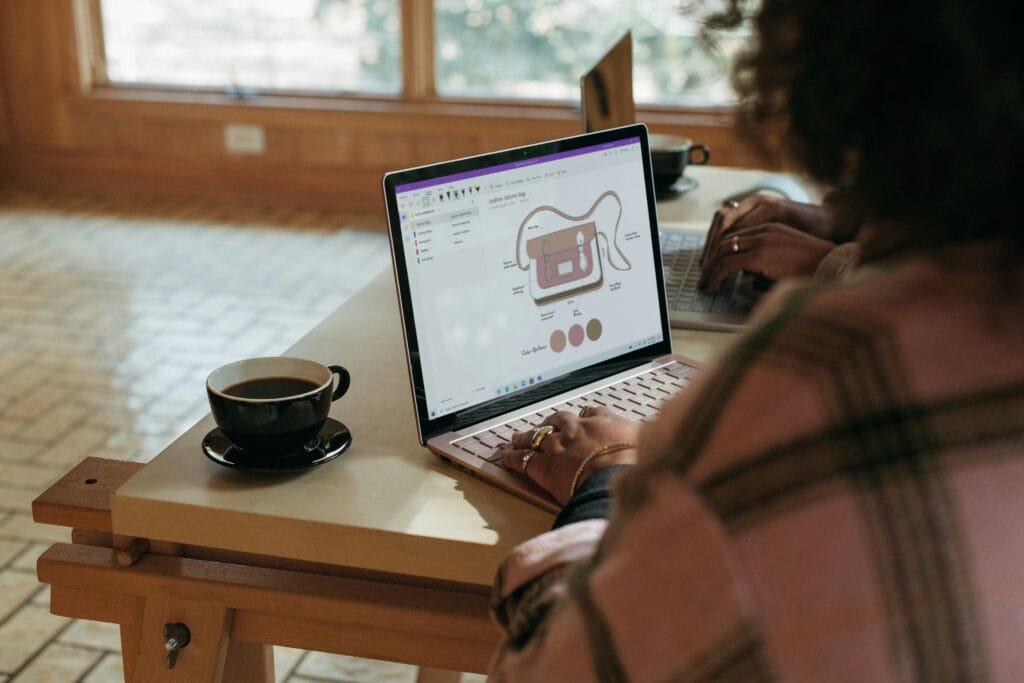Unlocking eCommerce Success: How Data-Driven Design Transforms UX and Revenue
“Gut instinct won’t pay your Shopify bill.” There, I said it. If you’ve ever redesigned your homepage based on a hunch—only to watch your conversion rate flatline or, worse, drop—you’re definitely not alone, but you are missing out. In today’s game of razor-thin margins and unpredictable consumer moods, Data-Driven Design isn’t just another trendy phrase. It’s your ticket to making user experience decisions that actually drive sales, not just win design awards.
So, let’s get real: what you think will delight customers and what they actually respond to can be miles apart. That’s exactly why the world’s fastest-growing eCommerce teams are swapping opinions for data, using robust A/B testing and CRO tactics to turn every tweak—no matter how small—into a revenue-boosting move. According to Designlab, Data-Driven Design means building your entire design process around what the numbers tell you, not your gut. It’s about harnessing user analytics, behavior patterns, and rapid experiments to make every improvement count.
If you want to stop leaving conversions up to chance and start unlocking steady revenue growth, it’s time to get serious about Data-Driven Design in UX. This article will show you the real-world strategies (and yes, a few “why didn’t I do this sooner?” case studies) you need to move the needle—no guesswork required.
Welcome to the world of Data-Driven Design! Imagine having a secret weapon that helps you make smarter decisions, leading to better outcomes and happier customers. That’s exactly what Data-Driven Design is all about—using the power of data to inform your design choices rather than relying solely on gut feelings or assumptions. In today’s fast-paced eCommerce landscape, where the competition is fierce and consumer expectations are sky-high, this approach isn’t just nice to have; it’s essential.
So, what does Data-Driven Design mean? At its core, it’s about leveraging data from various sources—like user behavior, market trends, and customer feedback—to create digital experiences that truly resonate with your audience. By focusing on quantitative and qualitative insights, you can tailor your website or app to not only meet but exceed user expectations. This method shifts your strategy from “what feels right” to “what data proves right,” allowing you to optimize every element of your eCommerce platform for maximum impact.
The benefits of adopting Data-Driven Design are significant. For starters, it enhances user experiences by ensuring that every touchpoint—from product pages to checkout flows—is tailored to your audience’s needs and preferences. This, in turn, boosts conversion rates and customer satisfaction. According to InkBot Design, data-driven strategies improve user experience by focusing on usability, desirability, and accessibility. These factors are crucial for retaining customers and driving conversions.
Moreover, data-driven approaches can help you anticipate trends and make proactive decisions. With tools like Predictive Analytics, you can forecast future customer behaviors and adjust your strategies accordingly. Predicting what your customers want before they even know it themselves can give you a competitive edge, as highlighted in BI Technology’s article on data-driven decision making in eCommerce.
To truly embrace Data-Driven Design, you’ll need to integrate various data sources effectively. This involves setting up a robust Customer Data Platform (CDP) to centralize information, as discussed in blikket’s own Customer Data Platform content. By consolidating data from analytics tools, CRM systems, and user feedback platforms, you can create a comprehensive view of your customers and craft personalized experiences that drive engagement and loyalty.
Embracing a data-driven methodology doesn’t mean stifling creativity. On the contrary, it provides a foundation upon which innovative ideas can flourish. By marrying creativity with data-backed insights, you can design experiences that are not only visually appealing but also incredibly effective.
Ultimately, Data-Driven Design is about making informed choices that benefit both your business and your customers. It’s about being agile, adaptable, and always ready to tweak and optimize based on what the data reveals. So, get ready to dive into a world where every design decision is a step toward greater success in the eCommerce realm.

Let’s cut to the chase: if you’re in eCommerce, understanding the nuts and bolts of Conversion Rate Optimization can be a game-changer for your revenue. Imagine having the ability to turn more of your site visitors into paying customers without needing to bump up your advertising budget. Sounds appealing, right? That’s the power of CRO.
What is Conversion Rate Optimization?
At its core, Conversion Rate Optimization is all about maximizing the percentage of visitors who complete a desired action on your site, whether that’s making a purchase, signing up for a newsletter, or filling out a contact form. It’s a systematic approach involving data analysis, user experience enhancements, and rigorous testing to fine-tune the user journey and remove any barriers to conversion.
Why is CRO Important for Your Bottom Line?
The significance of CRO lies in its direct impact on profitability. By boosting your conversion rate, you essentially increase the revenue you earn from your existing traffic. This means that instead of pouring more money into driving new visitors, you make the most out of those already visiting your site. For instance, if your site has a conversion rate of 2% and you manage to bump it up to 4%, you’ve effectively doubled your revenue without additional traffic costs.
Moreover, CRO isn’t just about making more sales—it’s about enhancing the overall user experience, which in turn builds customer trust and loyalty. When users find your site easy to navigate and your checkout process seamless, they’re more likely to return and recommend you to others. This ripple effect can significantly enhance your brand reputation and customer retention rates.
Implementing CRO: Where to Start?
So, how do you get started with CRO? It begins with understanding your audience. Dive into data-driven insights to comprehend user behaviors and preferences. Tools like heatmaps and user recordings can be invaluable, revealing exactly where visitors might be getting stuck and dropping off.
Once you have a clear picture, it’s time to test and iterate. This is where A/B testing comes into play, allowing you to experiment with different site elements to see what resonates best with your audience. Whether it’s testing different call-to-action buttons or refining your checkout process, each tweak can lead to improved conversion rates.
In addition, consider leveraging personalization. Tailoring the user experience based on individual preferences can significantly boost engagement and conversions. For example, presenting product recommendations based on browsing history or offering personalized discounts can make a substantial difference.
Remember, CRO is not a one-time task but an ongoing process. Continuously monitor performance metrics and be ready to adapt as consumer behaviors evolve. With a commitment to data-driven design principles and a focus on user-centric strategies, you can transform your eCommerce platform into a conversion powerhouse.

When it comes to enhancing your eCommerce UX, nothing beats the clarity and precision of A/B testing. Let’s dive into why this method is a game-changer for data-driven design and how it can elevate your user experience.
Why A/B Testing Matters in UX Design
A/B testing, sometimes known as split testing, is like holding a mirror up to your design assumptions. It involves comparing two versions of a webpage or app feature to see which one performs better. This isn’t just about aesthetics—it’s about leveraging quantitative data to make informed decisions. By methodically observing how users interact with each variant, you can pinpoint which design elements genuinely enhance user engagement and conversion rates.
Consider this: if you’re contemplating a complete overhaul of your checkout page, wouldn’t it be prudent to test different versions first? By seeing which version reduces cart abandonment, you can confidently implement changes that drive results.
The A/B Testing Process
Running an effective A/B test involves a few key steps:
- Define Your Objective: Whether you aim to boost your landing page clicks or improve the checkout flow, clarity in your goals sets the stage for meaningful results.
- Create Two Variants: Design two versions that differ by one element, such as a call-to-action button color or headline text. This controlled change allows you to attribute performance differences to that specific element.
- Run the Test: Use tools like Optimizely or Google Optimize to split your audience equally between the two versions. Ensure you gather enough data to achieve statistical significance.
- Analyze the Results: Look beyond conversion rates. Metrics like bounce rates and session durations can provide deeper insights into user behavior.
- Implement and Iterate: If one version outperforms the other, roll out the winning design and consider further tests for continuous improvement.
In the dynamic world of eCommerce, where user preferences shift rapidly, A/B testing enables a culture of continuous improvement. This iterative approach ensures your design remains relevant and effective, aligning closely with user expectations.
Real-World Impact
Take a page from the playbook of giants like Amazon, which continuously fine-tunes its checkout process through A/B testing, leading to reduced cart abandonment and increased sales. Or consider Airbnb, which optimized its landing page by testing search bar placements and background images, resulting in a noticeable uptick in bookings.
By integrating A/B testing into your UX strategy, you’re not just making educated guesses; you’re making data-driven decisions that enhance every user interaction. This method, as emphasized in blikket’s Split Testing content, is crucial for optimizing conversion rates and ensuring your eCommerce platform delivers the best possible user experience.

When it comes to illustrating the power of Data-Driven Design in the real world, eCommerce brands like Warby Parker, Glossier, and Gymshark offer stellar examples. These companies didn’t just create successful businesses; they leveraged data to transform their industries.
Warby Parker: Revolutionizing Eyewear with Data
Warby Parker entered the eyewear market with a bold, data-driven strategy. They tackled the challenge of online glasses shopping by introducing their Home Try-On program, allowing customers to try multiple frames at home before purchasing. This not only personalized the shopping experience but was a data goldmine, helping Warby Parker refine their product offerings based on customer preferences. As a result, their customer acquisition rate soared by 50%, contributing to their impressive valuation of over $3 billion. This case is a testament to how data utilization and personalized service can dramatically boost conversions.
Glossier: Building a Beauty Empire through Community Insights
Glossier’s success story is grounded in community-driven, data-centered design. Founder Emily Weiss harnessed feedback from beauty enthusiasts to shape product development. By cultivating a strong online community and using micro-influencers, Glossier ensured that product launches were informed by actual user desires. This approach turned Glossier into a $1.2 billion beauty empire, with user-generated content driving 90% of its online sales. It’s a vivid example of how engaging directly with your community and utilizing their feedback can lead to explosive growth.
Gymshark: Scaling with Influencer and Community Data
Gymshark’s journey from a garage startup to a billion-dollar brand illustrates the power of influencer marketing and community building, all underpinned by data. Founder Ben Francis used social media analytics to partner with fitness influencers who resonated with their target audience. This strategy not only expanded Gymshark’s reach but also created a loyal community around the brand. With over 5 million Instagram followers and 66% of sales stemming from social media, Gymshark’s case highlights the effectiveness of leveraging data to build a brand that feels personal and engaging. For more on how visuals can enhance conversions, explore conversion rate optimization strategies.
These case studies showcase that when eCommerce businesses harness data effectively, they can achieve significant improvements in user satisfaction and revenue. Whether it’s through personalized experiences, community feedback, or strategic influencer partnerships, data-driven design empowers brands to make informed decisions that drive success.

Ready to dive into the world of Data-Driven Design for your eCommerce operations? It’s time to turn those numbers into actionable insights that can transform your business. Here’s a roadmap to get you started on integrating data-driven strategies into your eCommerce platform.
Setting Up Data Collection
First things first, you need to ensure you have a solid foundation for collecting data. This means investing in tools that can capture a wide range of metrics, from customer behaviors to transaction histories. Platforms like Google Analytics and CRM systems are essential for gathering detailed insights. They help you track user interactions and understand the paths customers take on your site, highlighting what’s working and what needs improvement.
To take it a step further, consider implementing a Customer Data Platform, which centralizes data from various sources to create a comprehensive customer profile. This unified view allows you to tailor marketing efforts and enhance customer interactions effectively, as discussed in blikket’s CDP content.
Analyzing User Behavior
Once your data collection mechanisms are in place, the next phase is analysis. This is where the magic happens. You’ll want to dive deep into behavioral analytics to understand how users interact with your site. Look at metrics like bounce rates, session durations, and conversion paths. Tools like Apimio suggest leveraging machine learning algorithms to identify patterns and customer segments, which can inform your marketing strategies and product recommendations.
Moreover, employing Predictive Analytics can give you a competitive edge by anticipating future customer behaviors and market trends. This allows you to adjust your strategies proactively, ensuring you’re always one step ahead in meeting customer needs.
Continuous Testing and Optimization
Data-driven design is not a one-and-done deal; it’s an ongoing process of testing and refining. A/B testing, as emphasized in previous sections, is a powerful method to compare different versions of a webpage or element to see which performs better. This iterative approach helps in continuously optimizing the user experience based on real-time data.
Be ready to adapt your strategies as new data comes in. Implement dynamic pricing strategies to adjust prices in real-time based on market conditions and competitor prices. This approach, detailed in blikket’s Dynamic Pricing content, ensures you remain competitive and maximize revenue.
Finally, don’t forget the power of Personalization. Tailor the shopping experience based on individual customer data to boost engagement and satisfaction. Whether it’s personalized email campaigns or product suggestions, these efforts can significantly enhance customer loyalty and sales.
By setting up robust data collection, analyzing user behavior, and continuously testing and optimizing, you can leverage data-driven design to its fullest potential. Not only will this improve your eCommerce operations, but it will also pave the way for sustained growth and success.

Embracing Data-Driven Design is more than a smart strategy—it’s a necessity for thriving in today’s competitive eCommerce landscape. This approach transforms the way we create digital experiences, focusing on data insights rather than gut feelings. The benefits? They are manifold, starting with significantly enhanced user experiences. By analyzing user behavior and preferences, we can tailor every touchpoint to meet customer expectations, driving up conversion rates and fostering loyalty.
But the journey doesn’t stop at implementation. As Inkbot Design highlights, the ongoing nature of optimization is crucial. The eCommerce environment is ever-changing, with consumer behaviors shifting rapidly. This means that your optimization strategies need to be flexible and adaptable. Regularly reviewing and interpreting data allows you to make informed adjustments, ensuring your design remains relevant and effective. SaleHoo emphasizes that optimization is a continuous journey, not a one-time task. The key to unlocking the full potential of your online store lies in persistent refinement and adaptation.
Advanced data solutions like AI and machine learning are becoming indispensable. These technologies not only personalize customer experiences but also streamline operations and enhance decision-making processes. By leveraging these tools, businesses can anticipate trends, forecast demands, and even prevent fraud, as noted by Medium’s exploration of future eCommerce strategies. The ability to predict and respond to customer needs proactively can give you a competitive edge, ensuring you stay ahead in the market.
Moreover, data-driven design supports a culture of continuous improvement. Regular A/B testing and user feedback mechanisms help refine and enhance user experiences over time. This iterative process is crucial as it allows for real-time adjustments based on actual user interactions and feedback, keeping your eCommerce platform agile and user-focused.
In conclusion, as we look to the future of eCommerce, the importance of data-driven strategies cannot be overstated. They are essential not only for enhancing customer satisfaction and retention but also for increasing efficiency and profitability. In a rapidly evolving digital world, those who embrace data-driven transformations are set to lead the market, while those who hesitate risk being left behind.
Ready to Let Data Lead the Way?
If there’s one thing I hope you’ll take from this: Data-Driven Design isn’t just a buzzword—it’s your secret weapon for eCommerce growth that lasts. Shifting from gut feelings to data-powered decisions gives you a real edge, helping you fine-tune every customer touchpoint and grow your revenue without doubling your ad budget.
- Base your UX changes on real customer behavior, not opinions or trends.
- Champion A/B testing—turn every experiment into measurable results (and never settle for “good enough”).
- Embrace continuous optimization—because what worked last quarter might not win tomorrow.
- Use data to personalize and streamline shopping experiences, keeping your brand relevant and your customers loyal.
The eCommerce landscape will only get more competitive, and the brands that thrive will be the ones using data as their compass. So, what’s your first move? Will you lean into CRO, launch your next A/B test, or dig deeper into your user analytics? Whatever you choose, remember: every insight is a stepping stone to higher conversions and happier customers.
How will you use Data-Driven Design this quarter to outsmart the guesswork and outpace your competition? Let’s hear it—drop your thoughts or your boldest testing idea in the comments below. Your next breakthrough might just inspire someone else.










